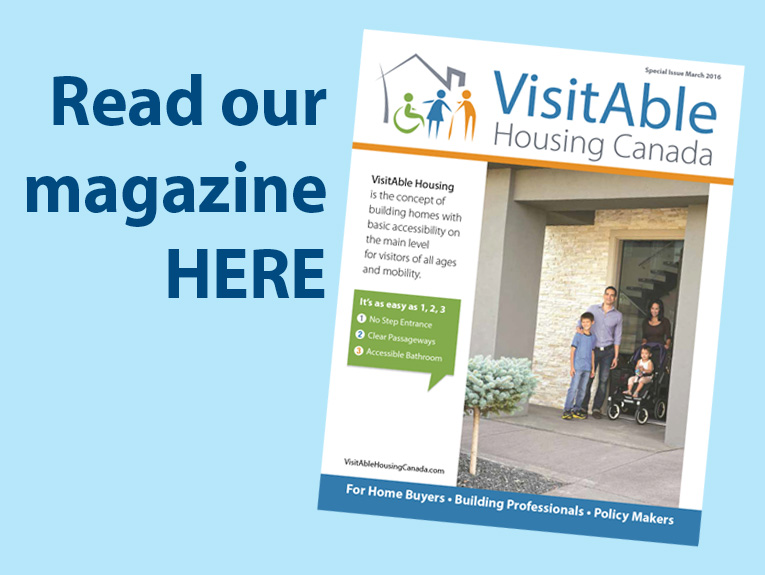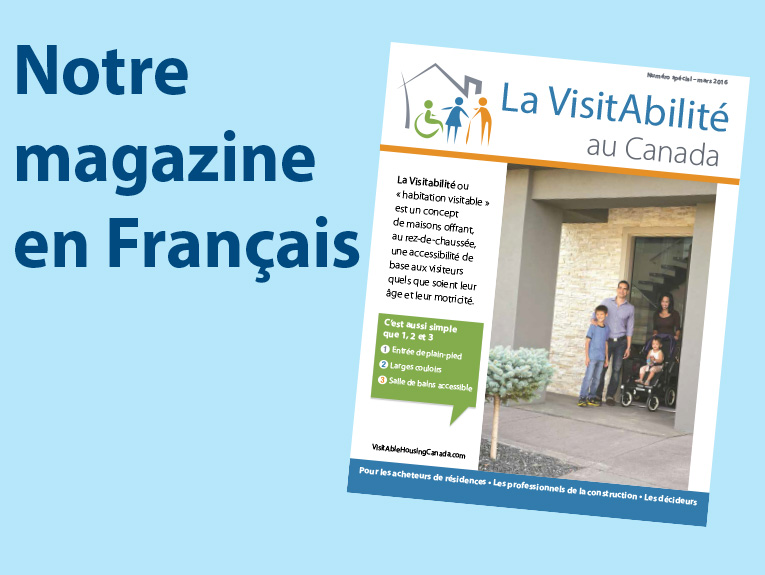Since the movement towards VisitAble houses first started in the U.S. in the 1980s, municipalities across Canada and the U.S. have taken different approaches to encourage or require VisitAble houses in their areas.
Designing a new home with VisitAble features is more cost-effective than attempting to retrofit a home with narrow hallways and doors later.
For a community, the benefits of VisitAble housing includes welcoming guests who use a mobility device, such as a wheelchair or walker, into residential homes. This helps to cut down on social isolation that can be experienced by people with disabilities.
VisitAble housing is also a benefit to communities with older citizens. As people age, VisitAble houses help residents to live at home longer, avoiding the necessity to move into an institutional setting. A house with a no-step entrance can also help to cut down on the number of falls by seniors, which in turns saves on health care costs.
Finally, VisitAble houses can be aesthetically pleasing and marketable to home buyers in a wide range of ages. Residents may appreciate the benefits as they carry in heavy furniture, bring in a stroller, or roll in a grocery cart. A VisitAble house design can also be useful for residents who have temporary difficulty in walking, for example, due to a broken leg.
The best practices and examples gathered on this website represent a starting point for policy makers. To learn more about the adoption of VisitAble housing, consult the project publications and supporting organizations. These will provide a productive resource to planners, elected officials, academics and advisors, who wish to promote VisitAble housing in their community.
The following additional information may be of interest to policy makers:
Assembly of First Nations – Resolution for VisitAbility
Casselman – Developing VisitAbility Policy
Clayton Trevillyan – Tucson & Pima Visitability Ordinance
DRewniak – Visitability in Manitoba Social Housing
Dwayne Rewniak – Manitoba VisitAbility Policies
England – Building Regulation Approved Document M 2004
Jason Watt – Vancouver VisitAbility Policy
Jill Weiss – Visitability Policy Analysis
OPantelimon – CIP Planning HC-Housing
Ringaert & Harris – VisitAbility & Measuring Up The North
SSayah – Visitability in Ottawa Social Housing
U of Calgary – Understanding Visitability in Alberta
US Bolingbrook 2003 – VisitAbility Ordinance



